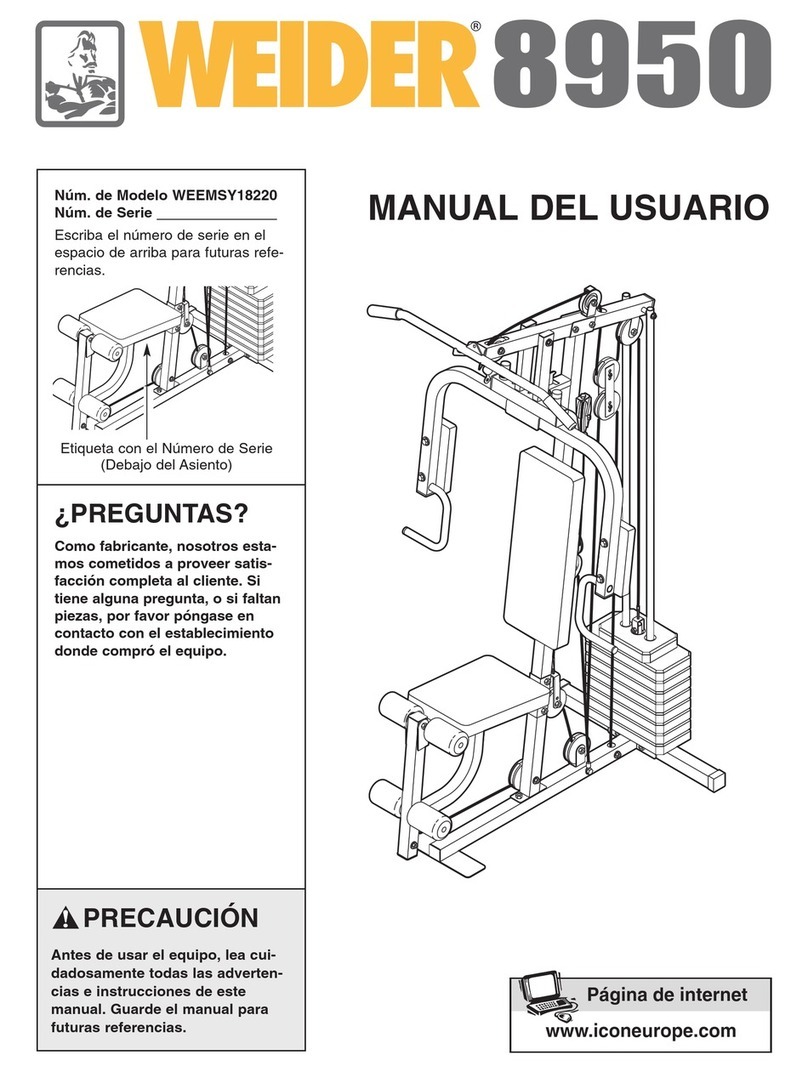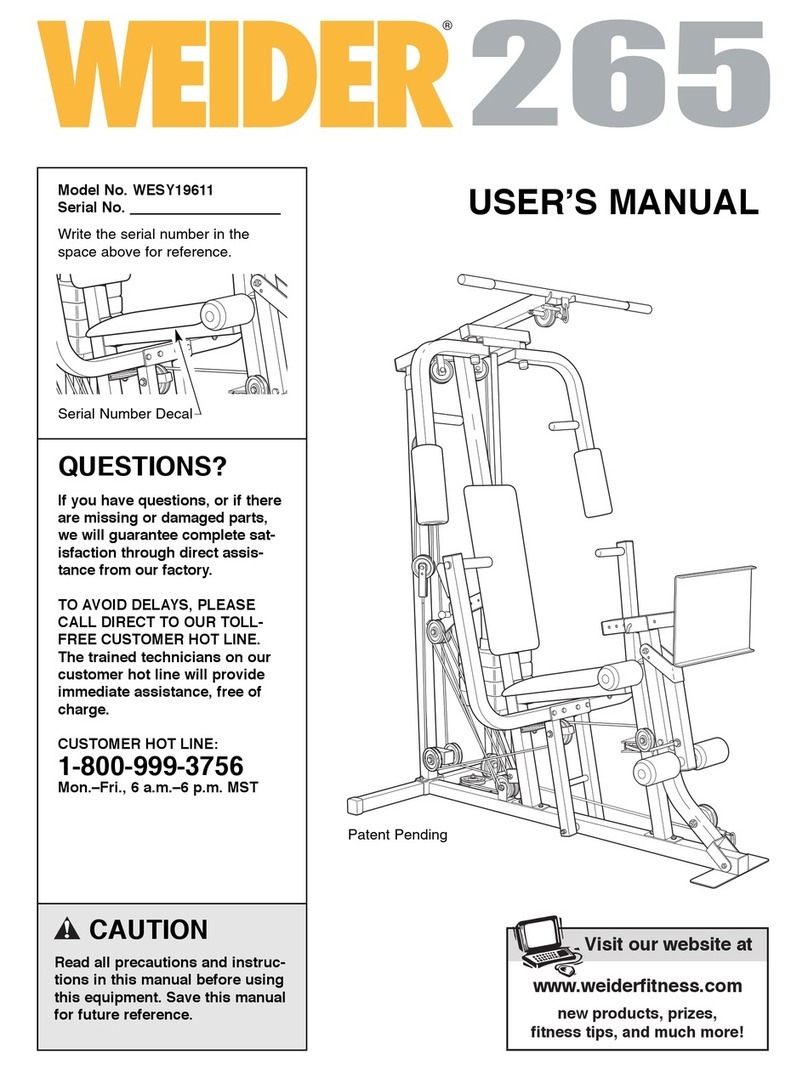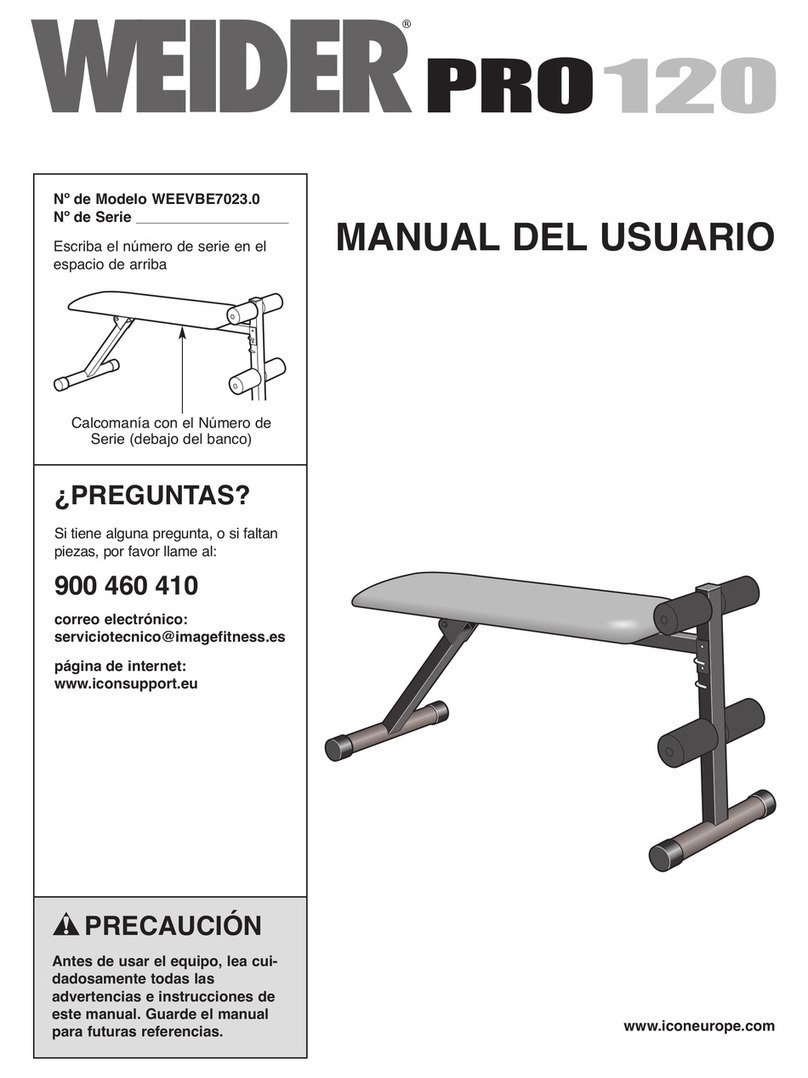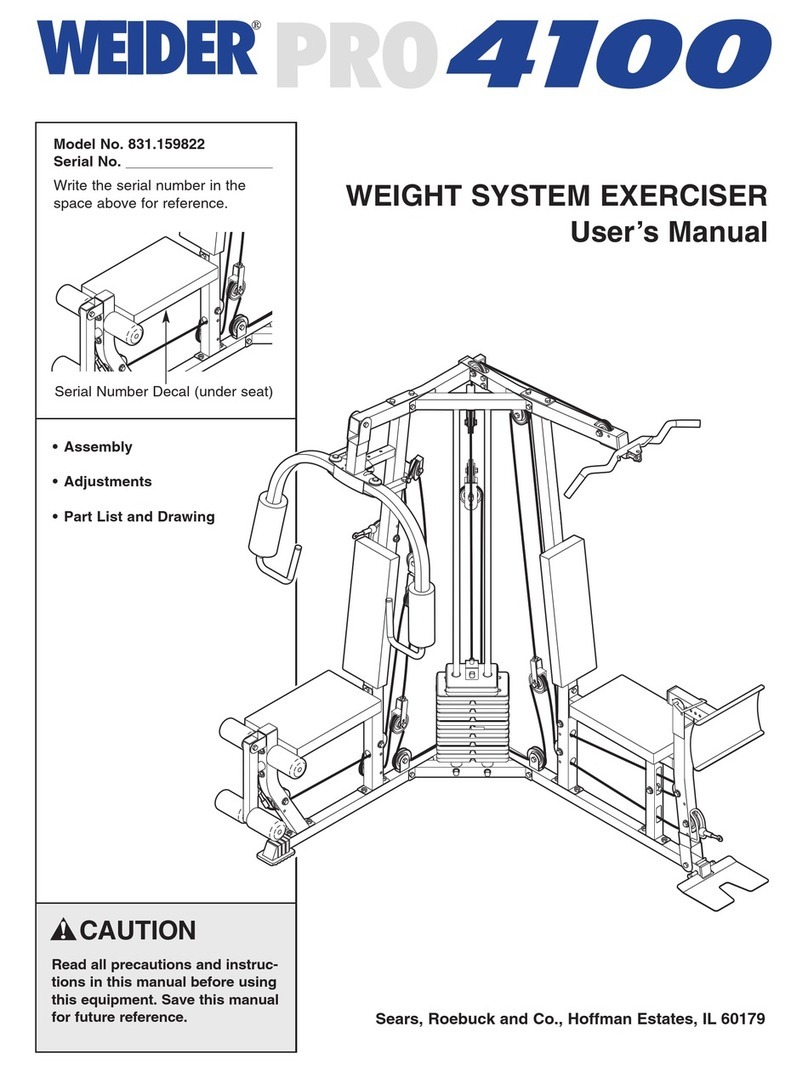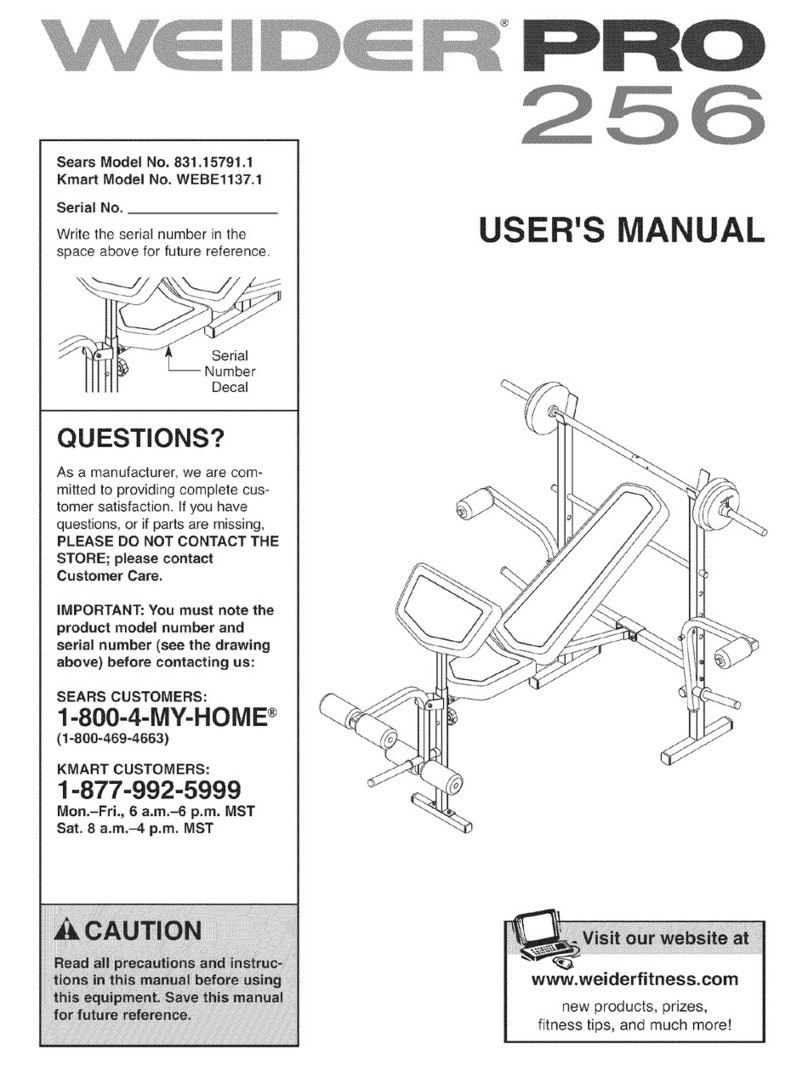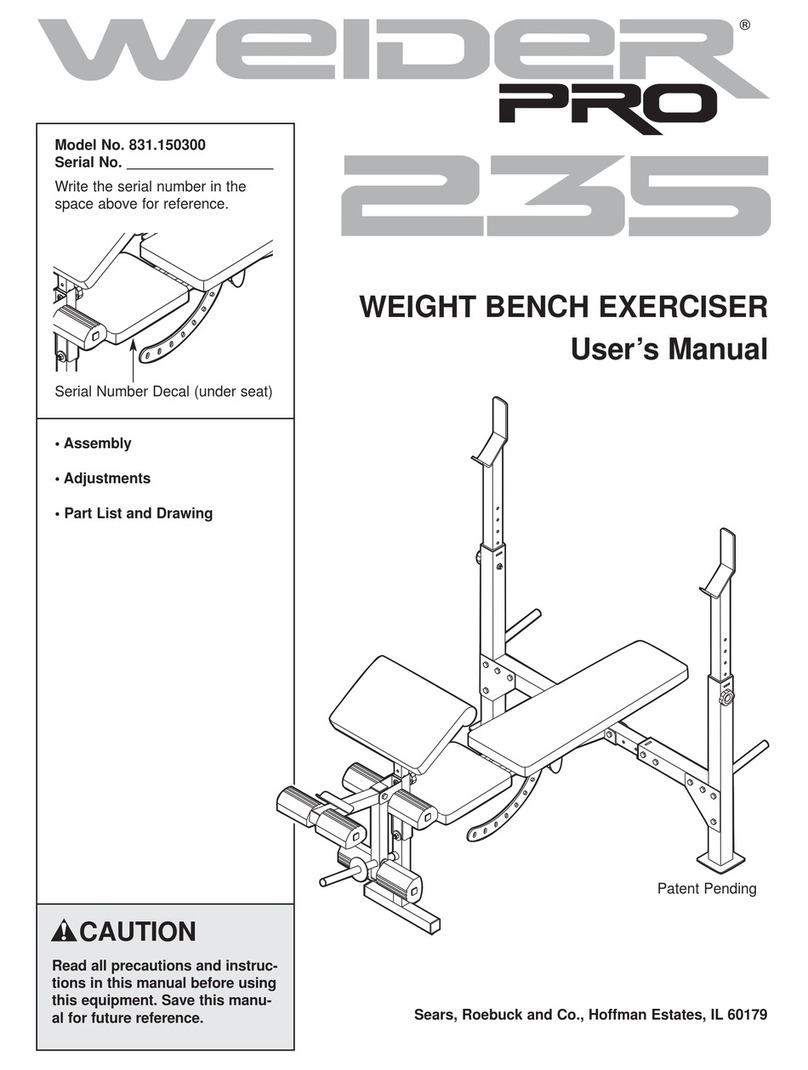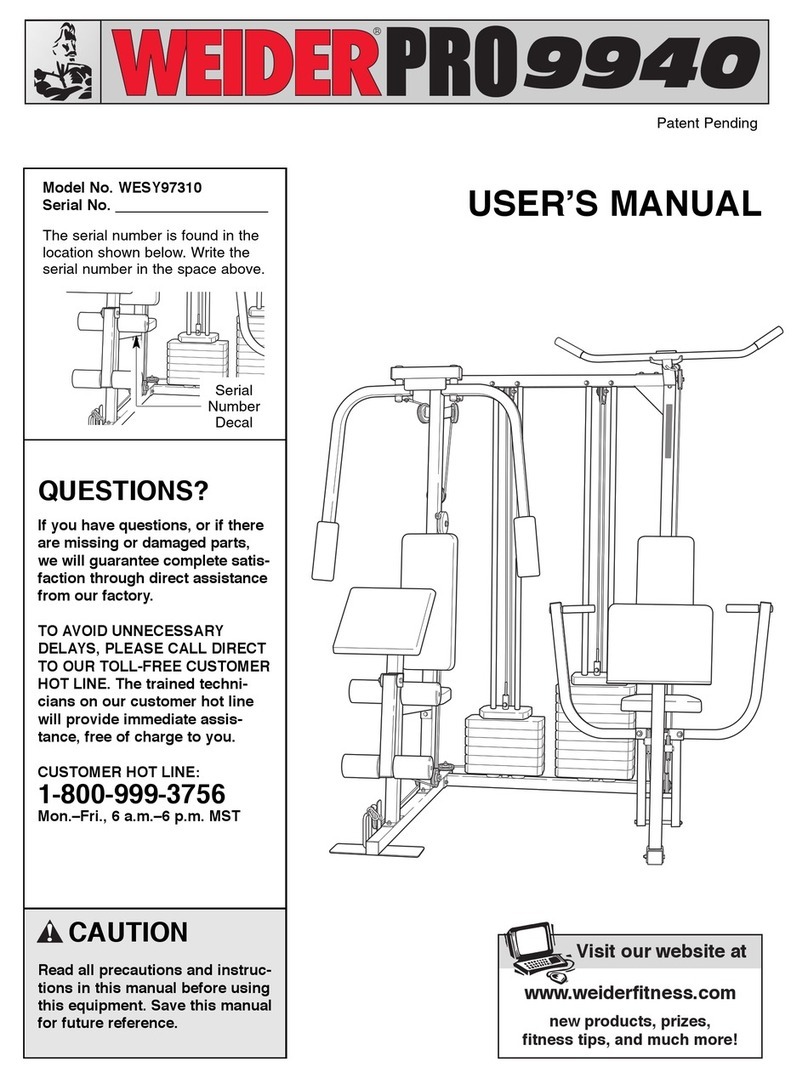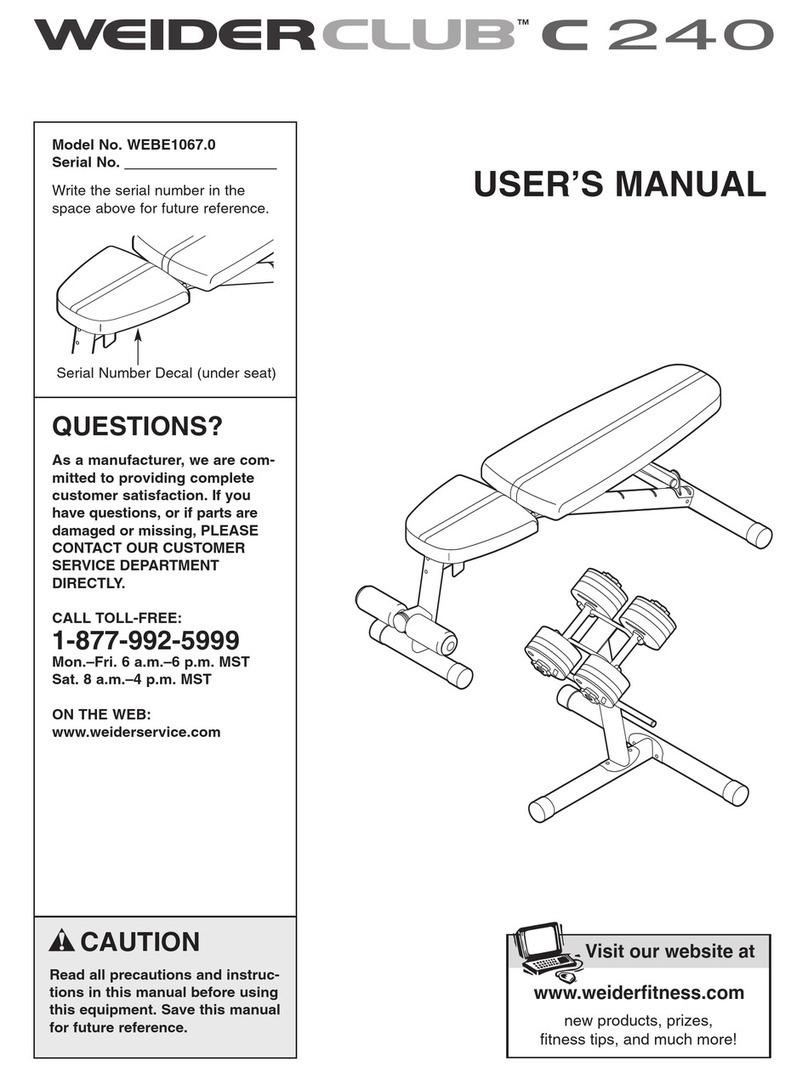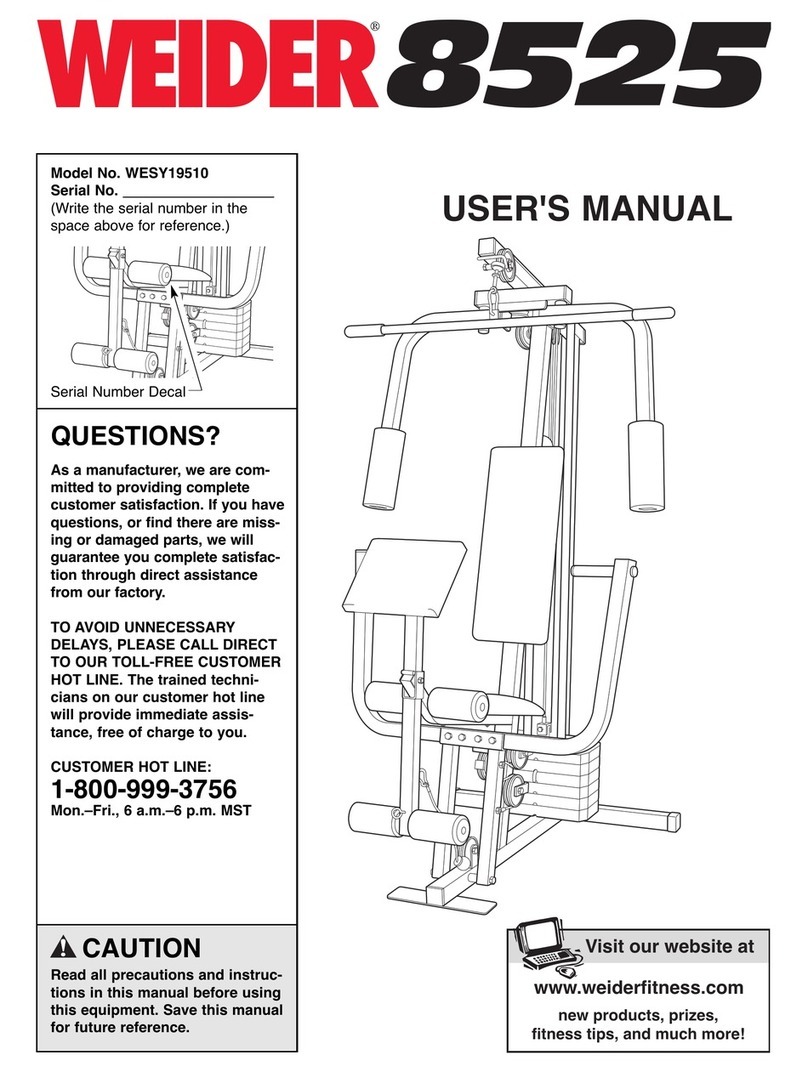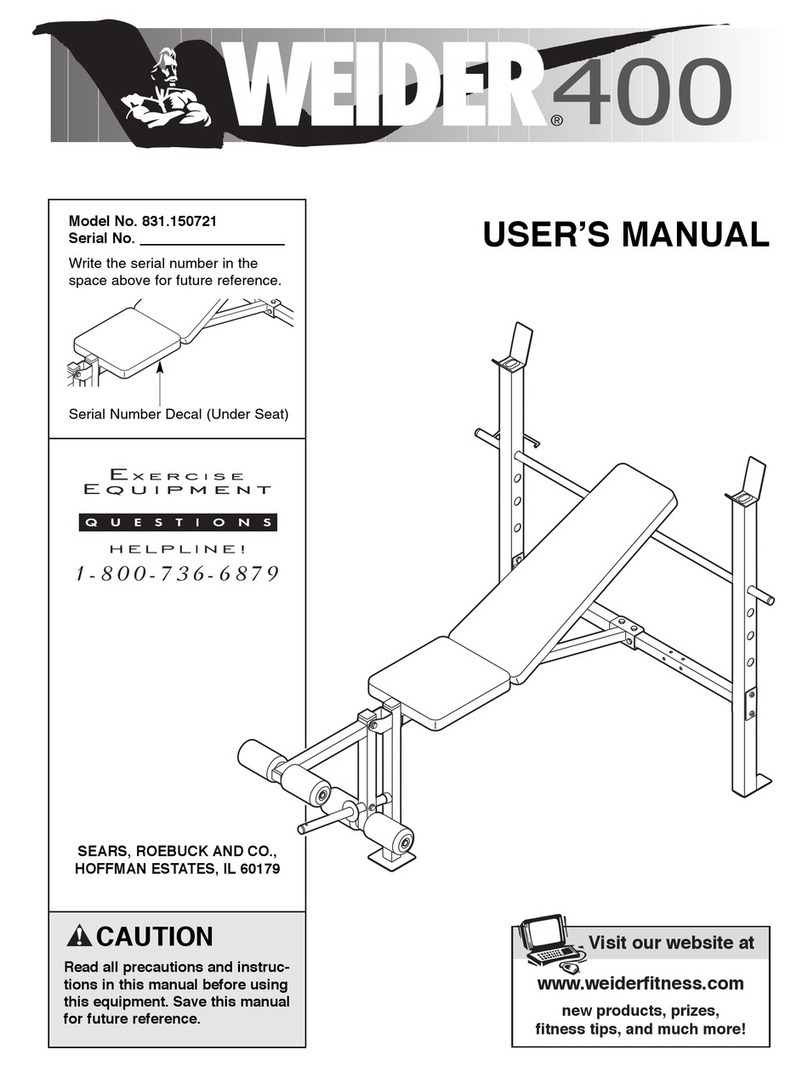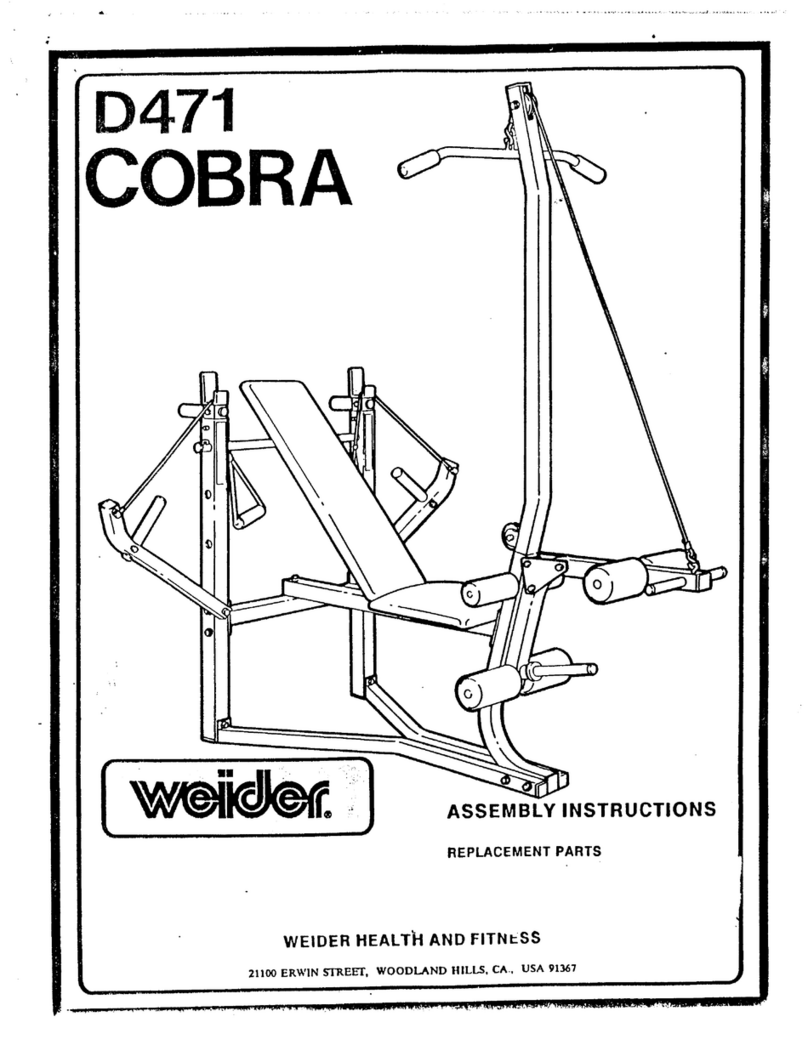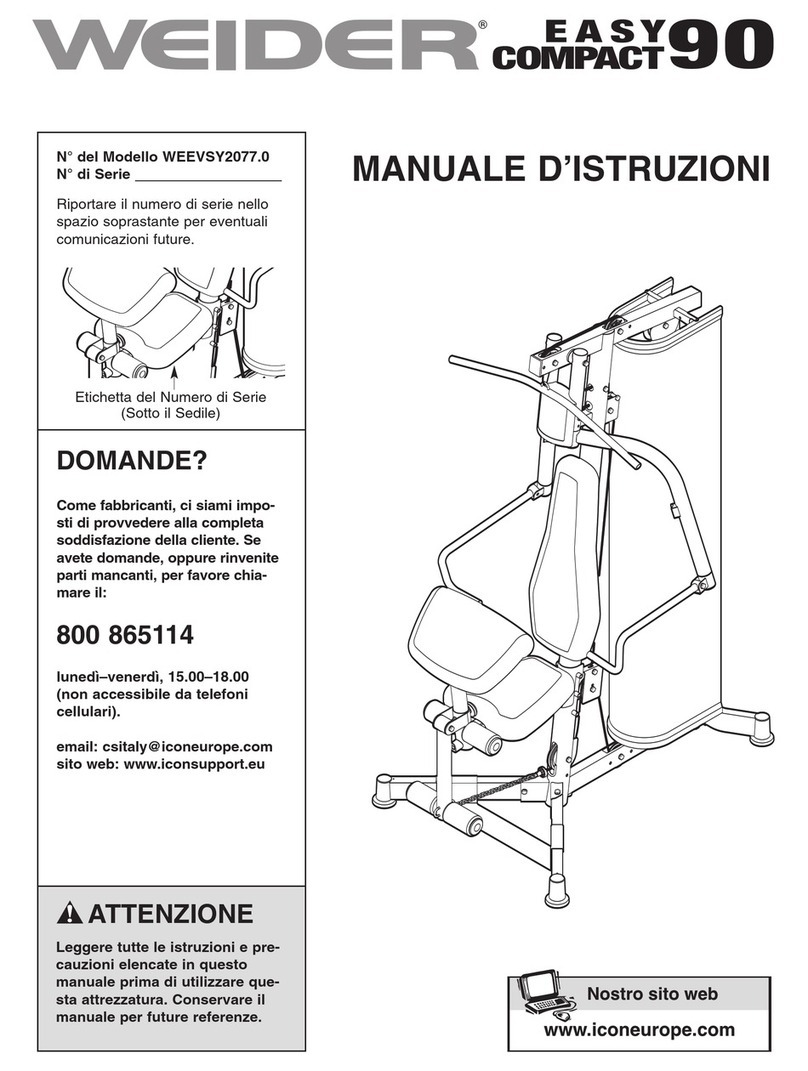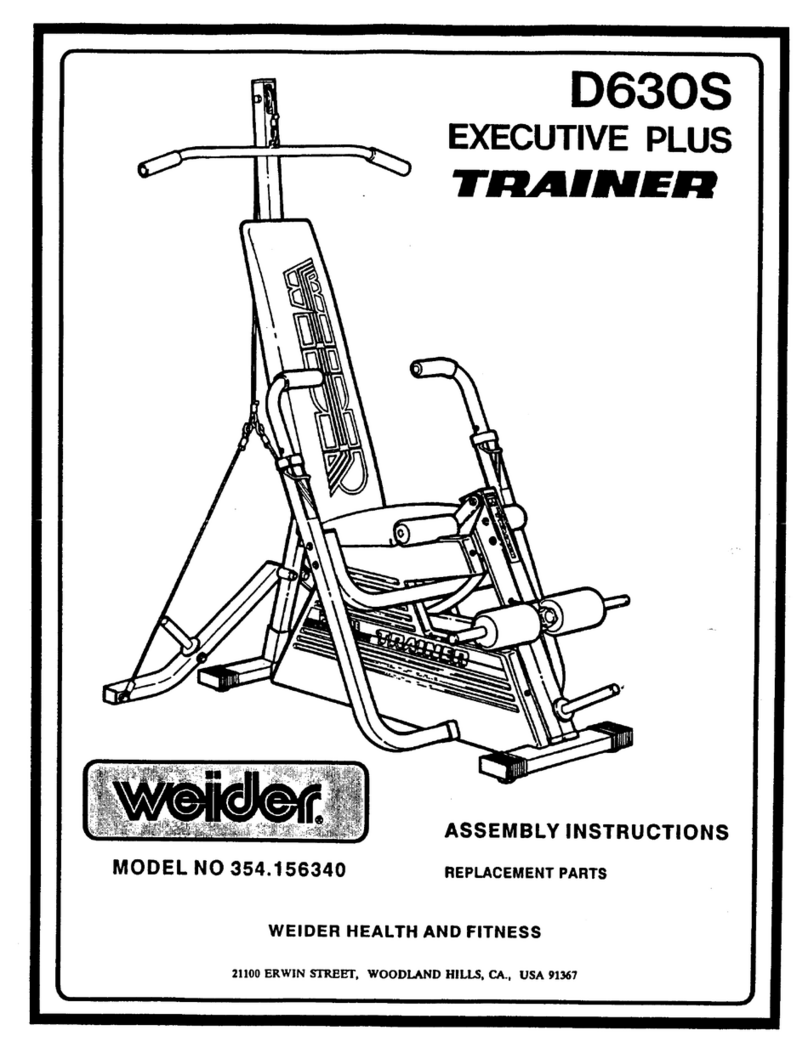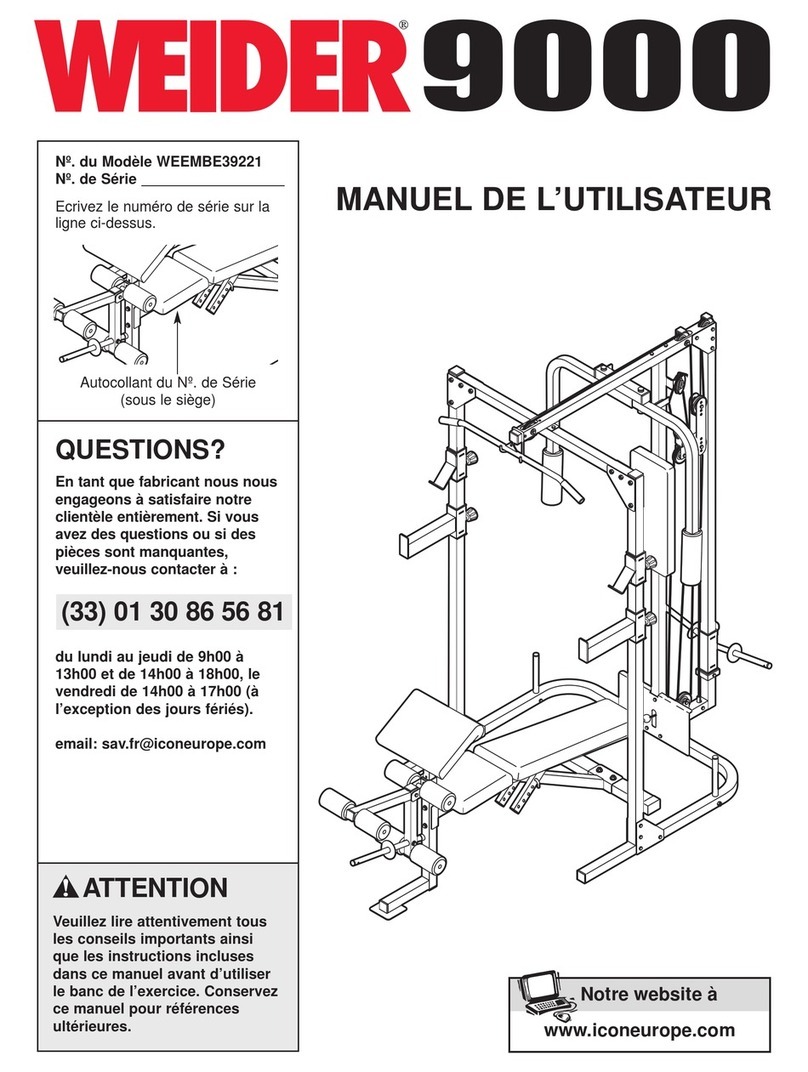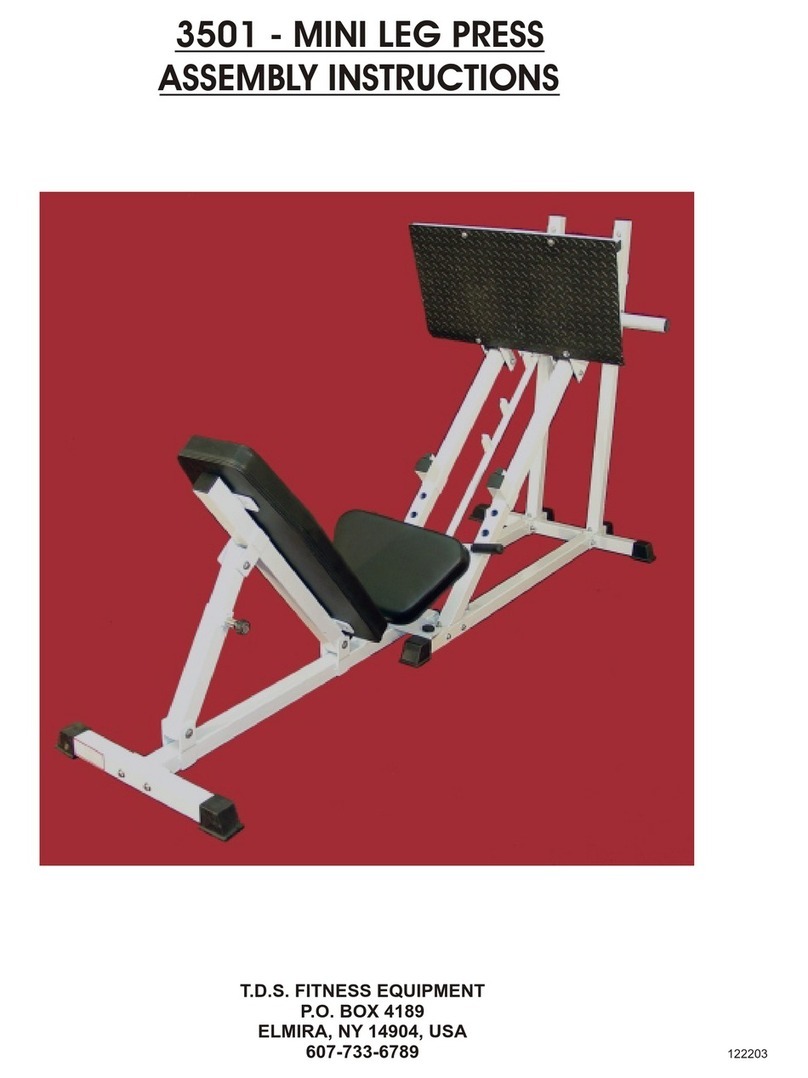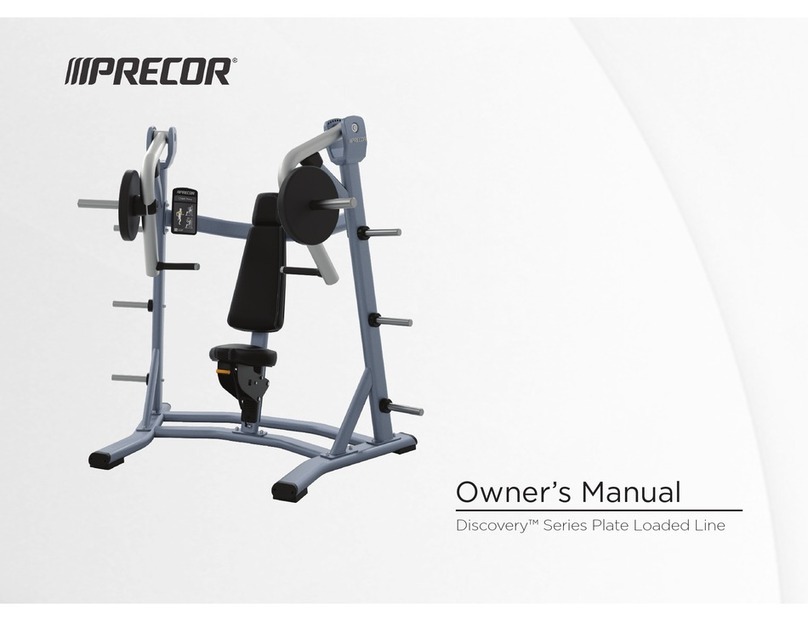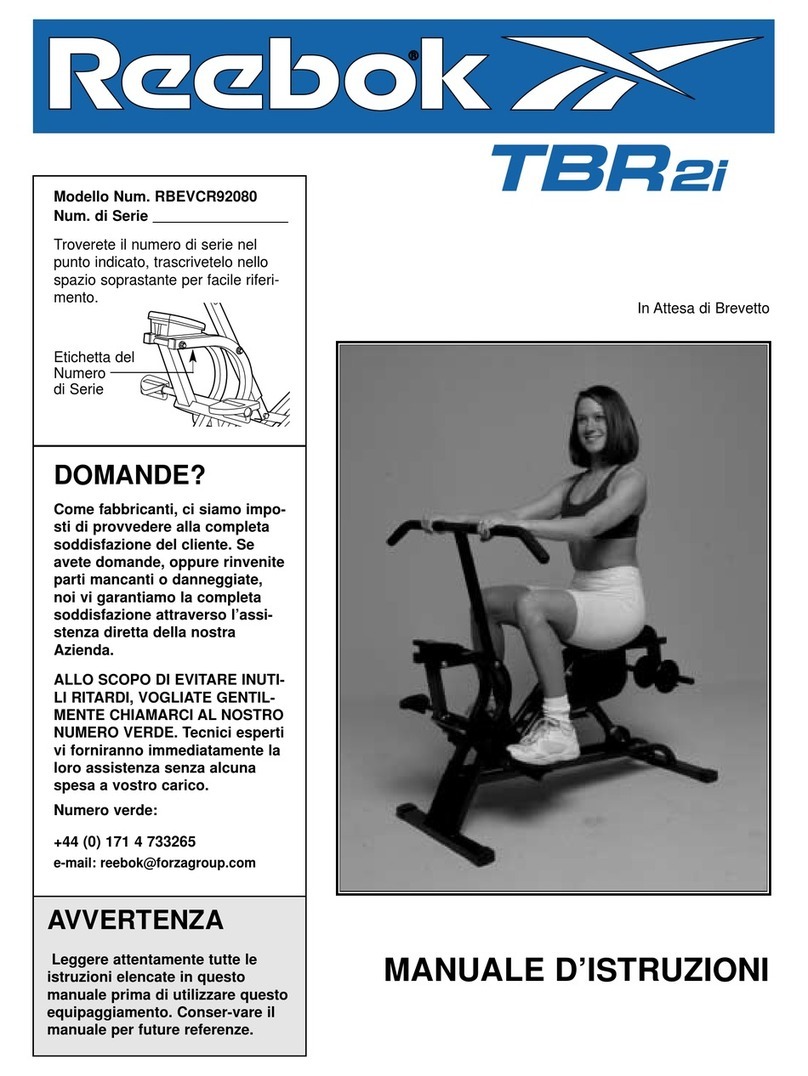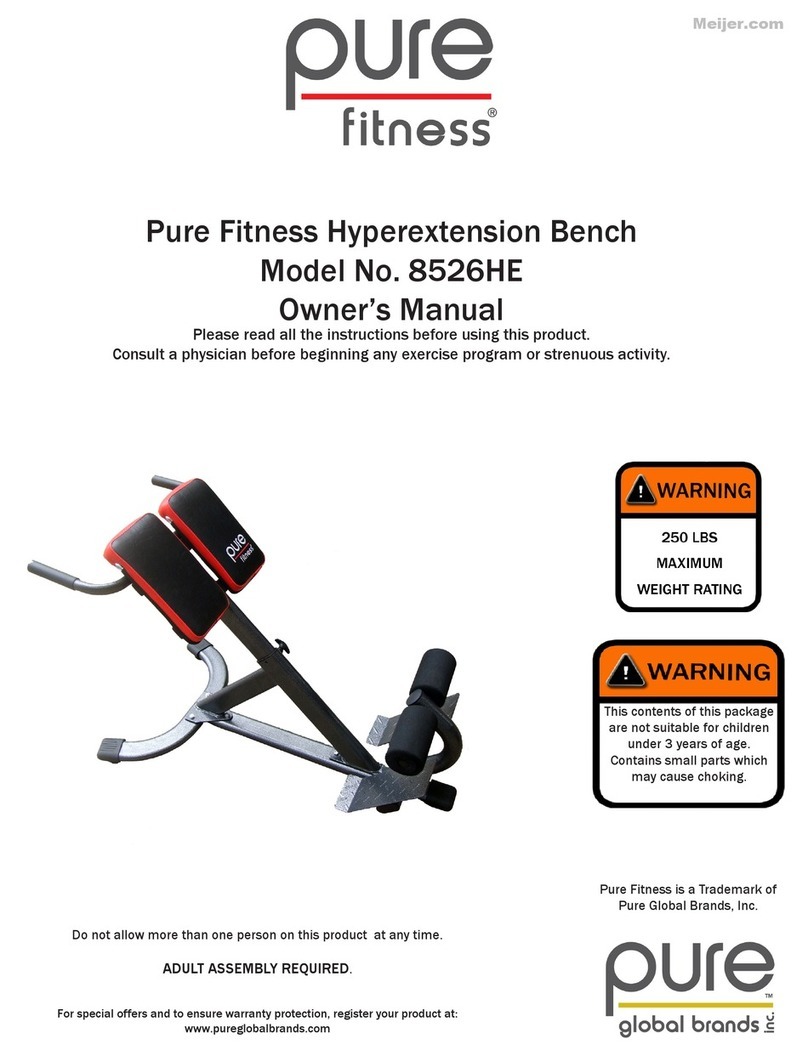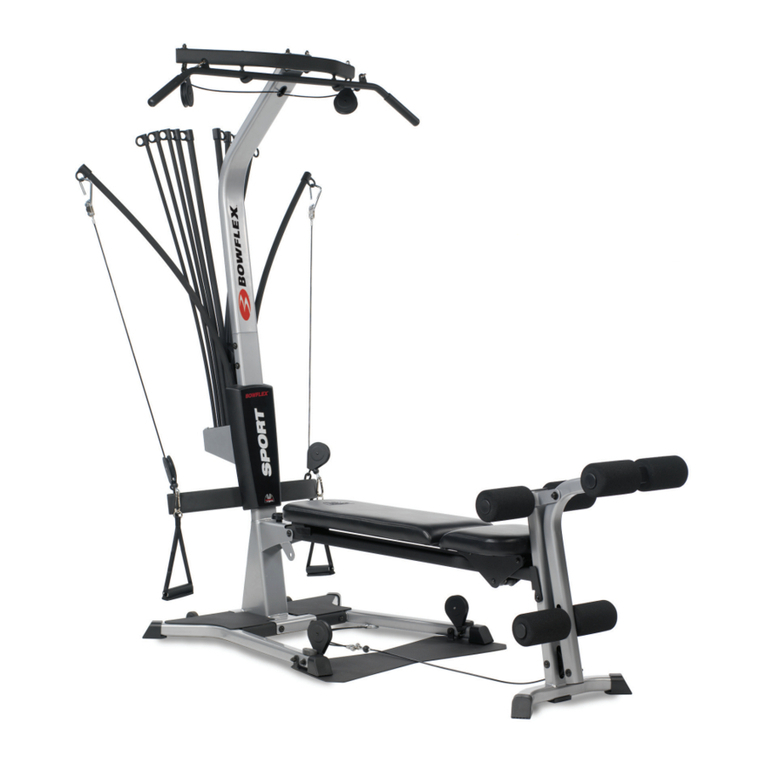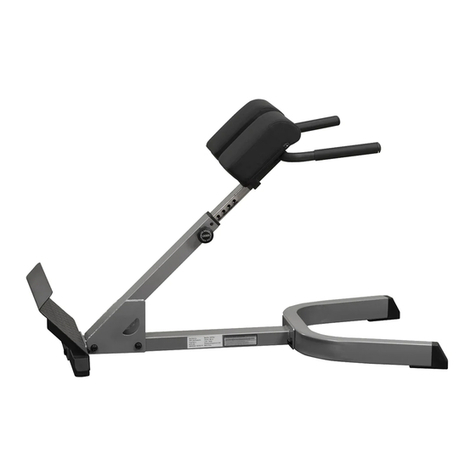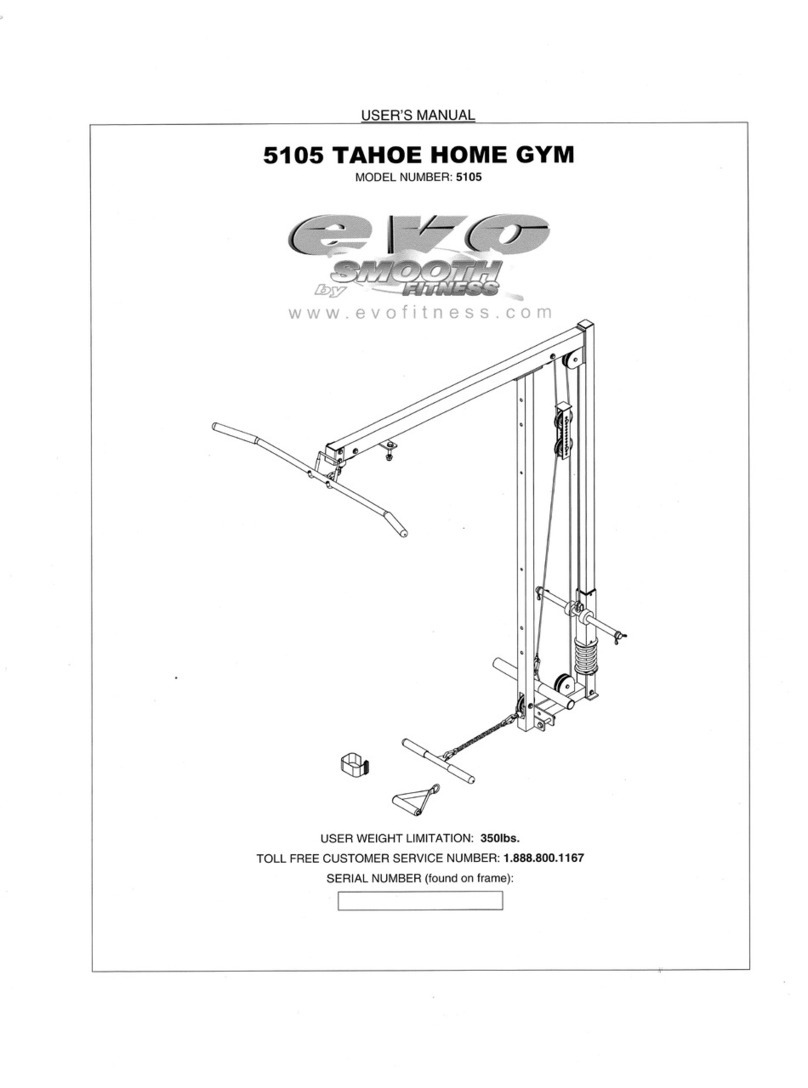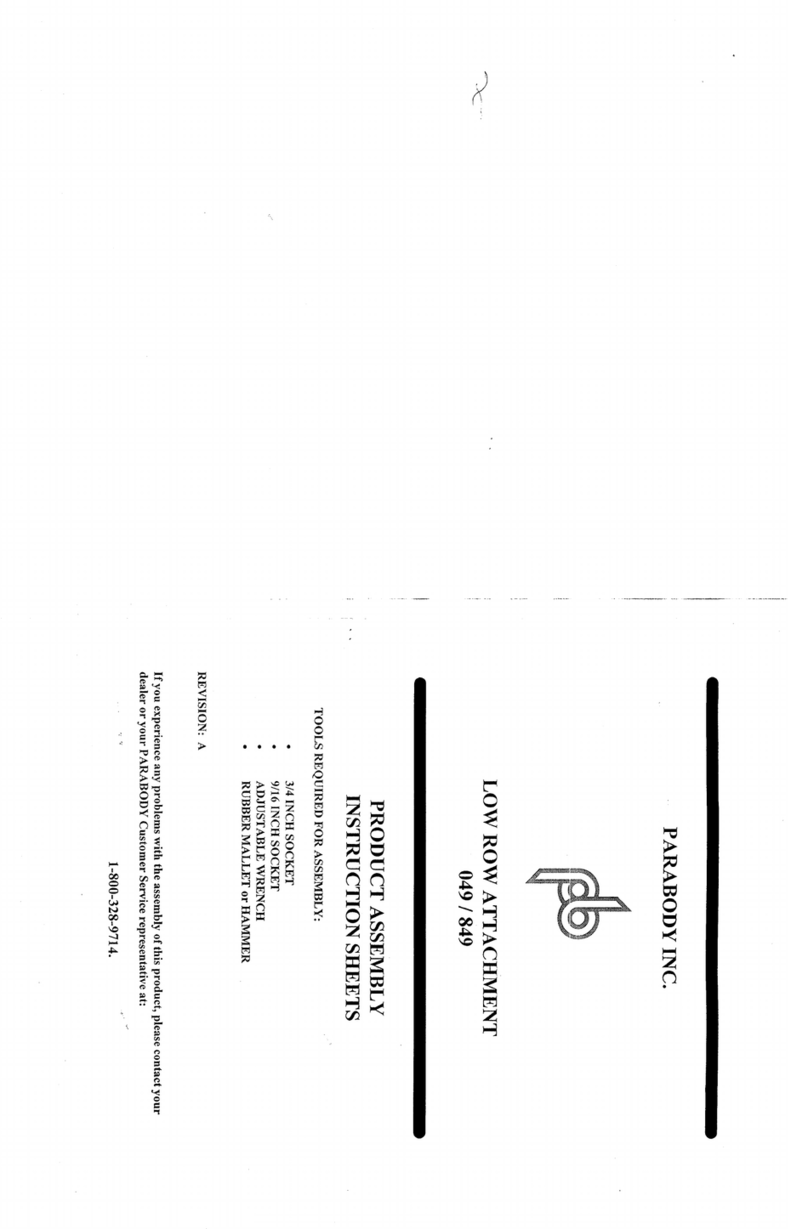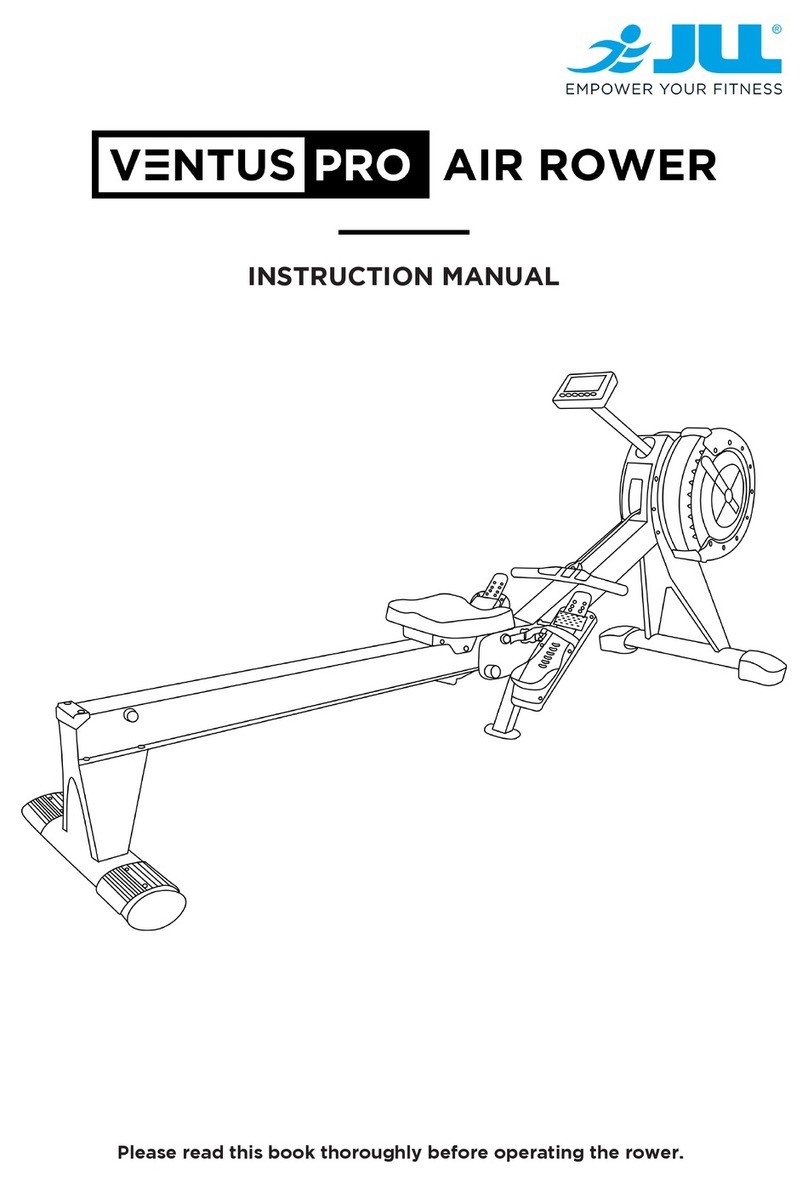310
1. Read all instructions in this manual before
using the weight bench.
2. Use the weight bench only as described in
this manual.
3. It is the responsibility of the owner to ensure
that all users of the weight bench are ade-
quately informed of all precautions.
4. Use the weight bench only on a level surface.
Cover the floor beneath the weight bench to
protect the floor.
5. Inspect and tighten all parts each time you
use the weight bench. Replace any worn
parts immediately.
6. Keep children under the age of 12 and pets
away from the weight bench at all times.
7. Always wear athletic shoes for foot protec-
tion while exercising.
8. Keep hands and feet away from moving parts.
9. The weight bench is designed to support a
maximum of 360 pounds, including the user
and dumbbells.
10. If you feel pain or dizziness at any time while
exercising, stop immediately and begin cool-
ing down.
11. The weight bench is intended for home use
only. Do not use the weight bench in any
commercial, rental or institutional setting.
12. Always make sure that the locking pins are
fully inserted and in the proper position for
the exercise you are performing.
13. When the seat is tilted to the upright position,
always insert the locking pin into the hole in
the seat frame as shown below. Do not insert
the locking pin into the welded tube.
14. When the seat is in the lower position, insert
the locking pin into the welded tube to pre-
vent the seat from pivoting during exercise.
WARNING:To reduce the risk of serious injury, read the following important precautions
before using the weight bench.
Important Precautions
THE FOUR BASIC TYPES OF WORKOUTS
Muscle Building
The only way to increase the size and strength of
your muscles is to push them close to their maximum
capacity. When you progressively increase the inten-
sity of your exercise, your muscles will continually
adapt and grow. You can tailor the individual exercise
to the proper intensity level in two ways:
• by changing the amount of weight used
• by changing the number of repetitions or sets per-
formed (A “repetition” is one complete cycle of an
exercise, such as one sit-up. A “set” is a series of
repetitions).
The proper amount of weight for each exercise obvi-
ously depends upon the individual user. You must
gauge your limits and select the amount of weight that
is right for you. Begin with 3 sets of 8 repetitions for
each exercise you perform. Rest for 3 minutes after
each set. When you can complete 3 sets of 12 repeti-
tions without difficulty, increase the amount of weight.
Toning
You can tone your muscles by pushing them to a
moderate percentage of their capacity. Select a mod-
erate amount of weight and increase the number of
repetitions in each set. Complete as many sets of 15
to 20 repetitions as possible without discomfort. Rest
for 1 minute after each set. Work your muscles by
completing more sets rather than by using high
amounts of weight.
Weight Loss
To lose weight, use a low amount of weight and
increase the number of repetitions in each set.
Exercise for 20 to 30 minutes, resting for a maximum
of 30 seconds between sets.
Cross Training
Many people desire a complete and well-balanced fit-
ness program, and cross training is a very efficient
way to accomplish this. One example of a balanced
program is:
• Plan weight training workouts on Monday,
Wednesday and Friday.
• Plan 20 to 30 minutes of aerobic exercise, such as
cycling or swimming on Tuesday and Thursday.
• Rest from both weight training and aerobic exercise
for at least one full day each week to give your body
time to regenerate.
The combination of weight training and aerobic exer-
cise will reshape and strengthen your body plus
develop your heart and lungs.
PERSONALIZING YOUR EXERCISE PROGRAM
Specifying the exact length of time for each workout,
as well as the number of repetitions or sets for each
exercise, is a highly individual matter. It is very impor-
tant to avoid overdoing it during the first few months
of your exercise program. You should progress at
your own pace and be sensitive to your body’s sig-
nals. If you experience pain or dizziness at any time
while exercising, stop immediately and begin cooling
down. Find out what is wrong before continuing.
Remember that adequate rest and a proper diet are
important factors in any exercise program.
WARMING UP
Begin each workout with 5 to 10 minutes of stretching
and light exercise to warm up. Warming up prepares
your body for more strenuous exercise by increasing
circulation, raising your body temperature and deliver-
ing more oxygen to your muscles.
WORKING OUT
Each workout should include 6 to 10 different exercis-
es. Select exercises for every major muscle group
with emphasis on the areas that you want to develop
the most. To give balance and variety to your work-
outs, vary the exercises from session to session.
Schedule your workouts for the time of day when your
energy level is the highest. Each workout should be
followed by at least one day of rest. Once you find the
schedule that is right for you, stick with it.
EXERCISE FORM
You will gain the greatest benefits from exercising by
maintaining proper form. This requires moving
through the full range of motion for each exercise and
moving only the appropriate parts of the body.
Exercising in an uncontrolled manner will leave you
feeling exhausted. On the exercise poster accompa-
nying this manual, you will find photographs showing
the correct form for several exercises. A description of
each exercise is also provided, along with a list of the
muscles affected. Refer to the muscle chart below to
find the locations of the muscles.
The repetitions in each set should be performed
smoothly and without pausing. The exertion stage of
each repetition should last about half as long as the
return stage. Proper breathing is important. Exhale
during the exertion stage of each repetition and inhale
during the return stroke. Never hold your breath!
Exercise Guidelines
Locking
Pin
Welded
Tube
Seat
Frame
WARNING:Before beginning this or any exercise program, consult your physician. This
is especially important for persons over the age of 35 or persons with pre-existing health problems.
Read all instructions before using. ICON assumes no responsibility for personal injury or property
damage sustained by or through the use of this product.
